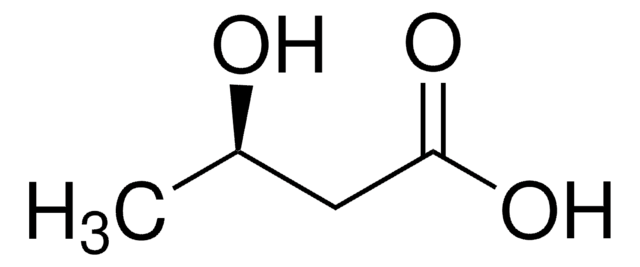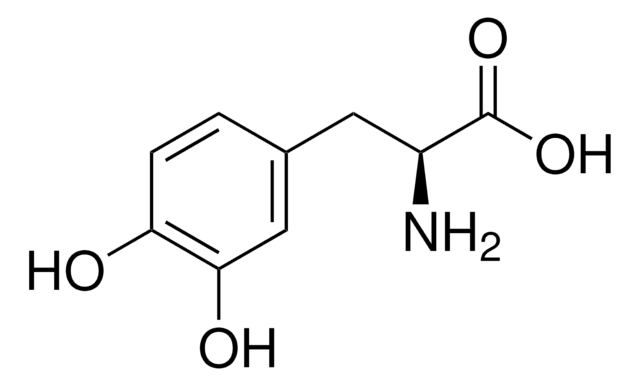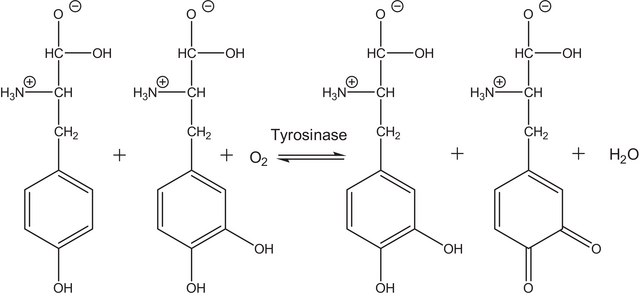3HBDB-RO
Roche
3-Hydroxybutyrate Dehydrogenase (3-HBDH)
suspension, ~3 units/mg protein (At 25 °C with 3-hydroxybutyrate as the substrate; standardized with BSA.), grade II
Synonym(s):
3-Hydroxybutyrate Dehydrogenase (3-HBDH), 3-HBDH
Sign Into View Organizational & Contract Pricing
All Photos(1)
About This Item
Recommended Products
Quality Level
form
suspension
specific activity
~3 units/mg protein (At 25 °C with 3-hydroxybutyrate as the substrate; standardized with BSA.)
packaging
vial of 2 mL (10127833001)
vial of 5 mL (10127841001)
manufacturer/tradename
Roche
concentration
5 mg/mL
impurities
<0.1% LDH
<5% MDH
optimum pH
6.2-6.9(for reduction)
7-9(for oxidation)
shipped in
wet ice
storage temp.
2-8°C
General description
3-Hydroxybutyrate dehydrogenase (3-HBDH) enzyme, obtained from Rhodobacter sphaeroides, is generally used for the quantification of ketone bodies, such as D-3-hydroxybutyrate and acetoacetate.
Application
3-Hydroxybutyrate Dehydrogenase (3-HBDH) oxidizes selectively (R)-3-hydroxymonocarboxylic acids, or reverse reaction.
Biochem/physiol Actions
3-Hydroxybutyrate dehydrogenase (3-HBDH), a mitochondrial enzyme, catalyzes the reversible oxidation of 3-hydroxybutyrate (3HB) to acetoacetate, with NAD as coenzyme. In mammals, acetyl-coA is metabolized, in one of two pathways, to produce acetoacetate and D-3-hydroxybutyrate, which along with acetone are known as ketone bodies. 3-HBDH reversibly reduces this free acetoacetate to D-3-hydroxybutyrate. In patients with diabetic ketoacidosis (DKA), the ratio of 3HB and acetoacetate can be as high as 10:1, as compared to the normal ratio of 1:1. 3-HBDH enzyme can be used to detect the quantity of 3HB in urine, serum, and blood samples.
Quality
Contaminants: <0.1% LDH, <5% MDH
Physical form
Suspension in 3.2 M ammonium sulfate solution, pH approximately 6
Preparation Note
Stabilizers: NADH, Ca2+
Other Notes
For life science research only. Not for use in diagnostic procedures.
Storage Class Code
12 - Non Combustible Liquids
WGK
WGK 1
Flash Point(F)
No data available
Flash Point(C)
No data available
Regulatory Information
常规特殊物品
Choose from one of the most recent versions:
Already Own This Product?
Find documentation for the products that you have recently purchased in the Document Library.
Yoshitaka Nakajima et al.
Acta crystallographica. Section F, Structural biology and crystallization communications, 61(Pt 1), 36-38 (2006-03-02)
A recombinant form of D-3-hydroxybutyrate dehydrogenase (EC 1.1.1.30) from Pseudomonas fragi has been crystallized by the hanging-drop method using PEG 3000 as a precipitating agent. The crystals belong to the orthorhombic group P2(1)2(1)2, with unit-cell parameters a = 64.3, b
E B Worrall et al.
The Biochemical journal, 241(1), 297-300 (1987-01-01)
The enzymic determination of D-3-hydroxybutyrate and acetoacetate normally involves the use of 3-hydroxybutyrate dehydrogenase (HBDH, EC 1.1.1.30) of bacterial origin. We show that HBDH from Rhodopseudomonas spheroides (BCL, grade II) contains a 3-hydroxyisobutyrate dehydrogenase (HIBDH) activity: activity with 3-hydroxyisobutyrate as
Fahimeh Khorsand et al.
IET nanobiotechnology, 7(1), 1-6 (2013-05-28)
Precise detection of 3-hydroxybutyrate (HB) in biological samples is of great importance for management of diabetic patients. In this study, an HB biosensor based on single-walled carbon nanotubes (SWCNTs)-modified screen-printed electrode (SPE) was developed to determine the concentration of HB
Our team of scientists has experience in all areas of research including Life Science, Material Science, Chemical Synthesis, Chromatography, Analytical and many others.
Contact Technical Service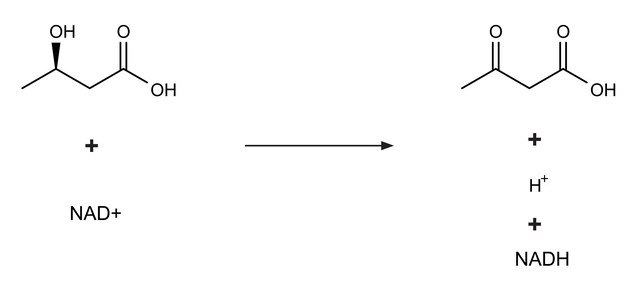
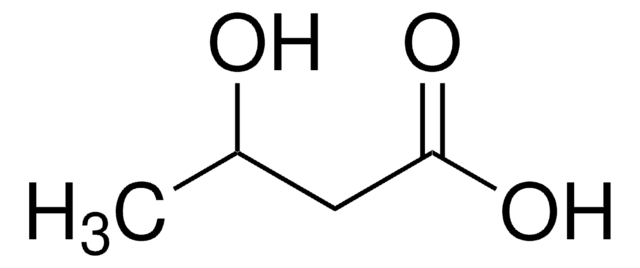
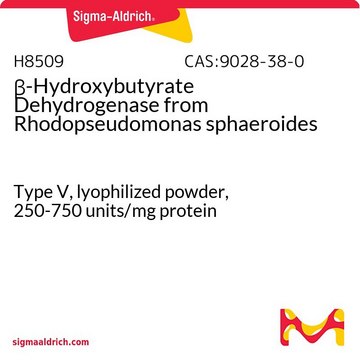
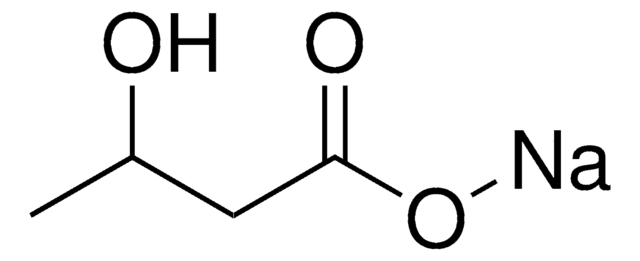
![Poly[(R)-3-hydroxybutyric acid] natural origin](/deepweb/assets/sigmaaldrich/product/structures/129/476/7d1c924b-f644-4889-a2d6-d7a923ce382c/640/7d1c924b-f644-4889-a2d6-d7a923ce382c.png)
